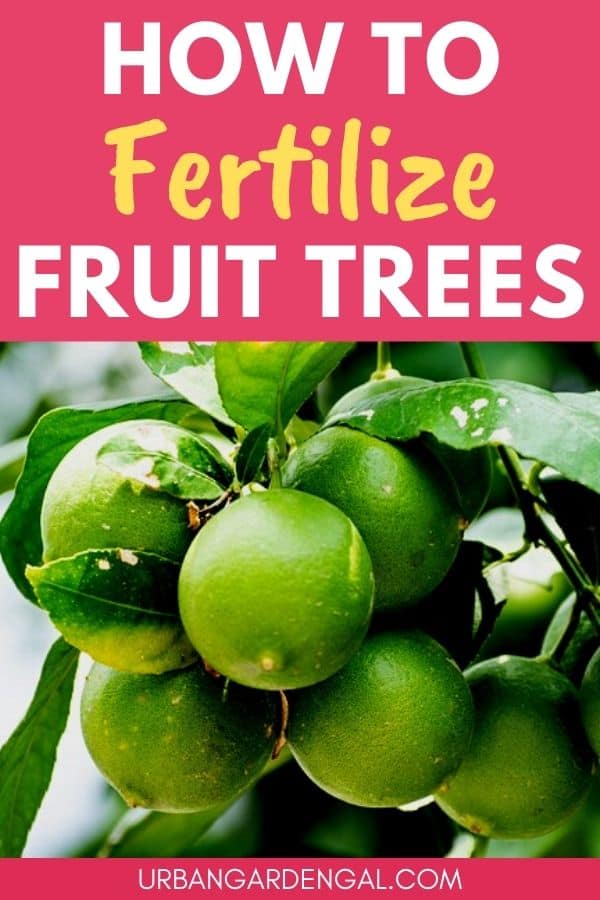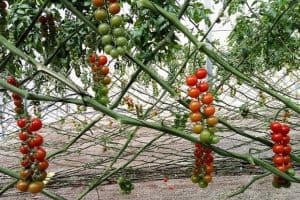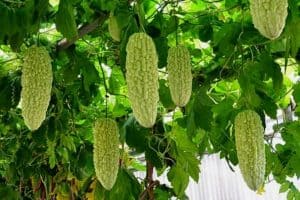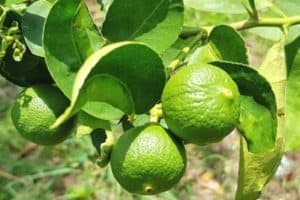Fertilizing fruit trees helps to keep them healthy so they can produce high quality fruit year after year.
In this article I’ll share my best tips for fertilizing backyard fruit trees.
This post contains affiliate links. Please read the disclosure for more info.
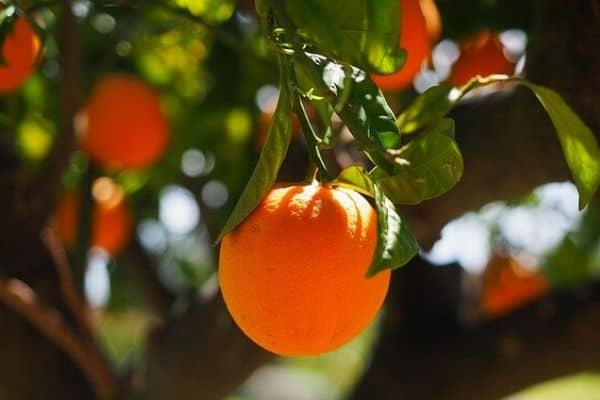
FERTILIZING FRUIT TREES
When to fertilize fruit trees
The best time to fertilize your fruit trees is during spring when the buds are developing on the trees.
This gives the tree time to take in the nutrients while they’re actively growing and will ensure that you get a good crop of fruit.
If you fertilize fruit trees in late summer or fall, it can cause the trees to produce new growth just when they’re about to become dormant for the winter.
The new growth can be damaged by frost so it’s always best to avoid fertilizing too late in the season.
Which fertilizer to use
Fruit trees need a fertilizer that contains:
Nitrogen – to promote new growth.
Potassium – for bud and fruit development.
Phosphorus – needed for root growth and development.
Fruit trees also need a variety of minerals and trace elements including calcium, magnesium, sulfur, iron and zinc.
Look for fertilizer that is made especially for fruit trees like this one.
If you prefer to use an organic fertilizer you can add composted chicken manure, blood meal or cottonseed meal to the area around your trees.
These natural fertilizers are great for adding nitrogen to the soil.
Avoid using coffee grounds to fertilize your fruit trees because they’ll make the soil too acidic.
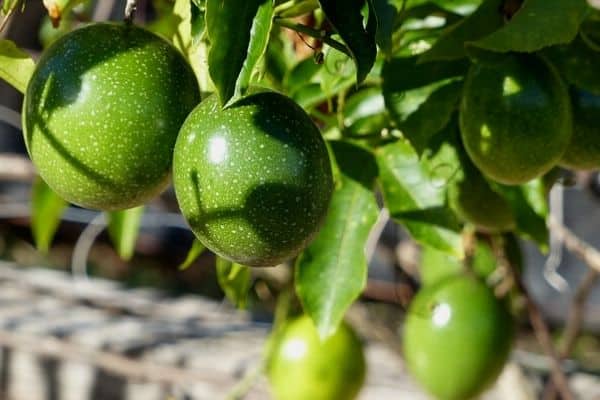
Fertilizing young fruit trees
Young fruit trees will benefit from a slow release fertilizer combined with a layer of mulch over the top.
Spread the fertilizer on the ground about 12 inches (30 cm) from the base of the tree, gently rake it in and water generously.
Fertilizing mature fruit trees
Established fruit trees need to be fertilized each year to ensure that they keep producing fruit.
Apply the fertilizer pellets to the drip line (the area below the furthest branches of the tree) and rake it in.
After applying the fertilizer you can add a layer of compost or mulch around the tree.
Foliar feeding fruit trees
Applying liquid fertilizer to the leaves of the tree is known as foliar feeding and it’s a great way to give your fruit trees a boost of micronutrients. [1]
Look for a seaweed or kelp
fertilizer spray and apply it to the foliage in late spring and again in early summer for best results.
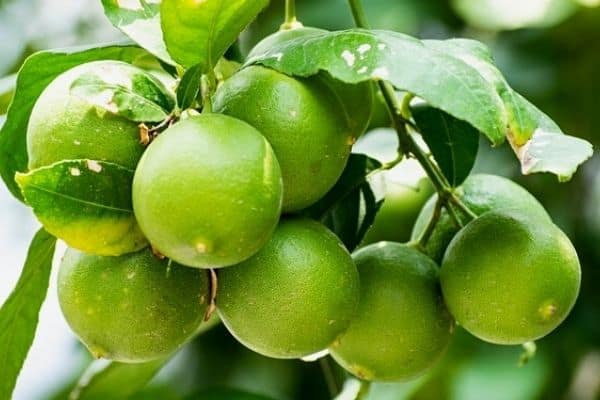
Fertilizing citrus trees
Citrus fruit trees like oranges, lemons and limes need plenty of nitrogen as well as potassium, phosphorus and trace minerals.
Look for a fertilizer that is specifically made for citrus trees like this one so you can be sure that your citrus trees are getting the nutrients that they need.
Fertilizing fruit trees in containers
Fruit trees in containers need to be watered more frequently than fruit trees planted in the garden and the extra watering causes the nutrients in the soil to be leached out.
It’s a good idea to fertilize potted fruit trees monthly during spring and early summer or add slow release fertilizer to the pots at the beginning of spring.
Over fertilizing
Over fertilizing fruit trees usually results in abundant foliage growth but very little fruit production.
Too much fertilizer can also cause the trees to grow too rapidly, leading to weak branches.
It’s a good idea to use a soil test kit if you’re not sure whether your trees need fertilizer.
So there are my tips for fertilizing backyard fruit trees.
With regular fertilizing you can be sure that your fruit trees will keep producing fruit year after year.
RELATED ARTICLES
- How To Keep Birds Away From Fruit Trees
- 8 Small Fruit Garden Ideas
- How To Grow Fig Trees In Containers
- 7 Cool Climate Fruit Trees
- 10 Green Fruits For Your Garden
How often do you feed your fruit trees? Let me know in the comments below.
Are you on Pinterest? I have boards dedicated to Growing Fruit and Backyard Gardening that you may enjoy. You can also find me on Facebook.

